BlackBerry 10 Teased Kicking Off BlackBerry World
by Jason Inofuentes on May 1, 2012 6:46 PM EST- Posted in
- Laptops
- Smartphones
- RIM
- BlackBerry
- Mobile
- BlackBerry BBX
- Blackberry 10
As the lights came up on Thorston Heins opening remarks at BlackBerry World 2012, expectations were... well, low. There was always the possibility that we would hear of some huge shake-up that would drastically alter RIM's course; say, switching to a services model and opening their BlackBerry Enterprise Server offerings to the competition. Or, we could hear talk of the impressive results of the hard work of a talented team of engineers and designers, and hopes and assurances that we'd love it. We've heard this kind of talk from struggling giants, including a year ago this past February when Jon Rubinstein introduced us to the Palm Pre 3 and TouchPad. Though Heins remarks included a hint at the kind of course correction we might have speculated on, he quickly transitioned to a preview of the QNX-based BlackBerry 10. And though it's familiar, it's nothing like 7.
Vivek Bhardwaj, RIM's Head of Software Portfolio, lead our preview and focused on two key areas, app flow and input, and threw in an impressive peek at the camera app. BlackBerry 7 did little to alter the way you use a BlackBerry. The PlayBook's OS is the basis for what we're seeing here, and is fundamentally what's running in the BlackBerry 10 Developer Alpha hardware being handed out at the event today. The PlayBook's multitasking echoed the scheme we saw in WebOS, cards that can be quickly swiped between. BlackBerry 10 introduces a scheme that stacks cards that have been opened in succession, and allows a drag to the left to peek at the stack underneath. This paradigm borrows much from WebOS 3.0, though it's unclear what's changed in terms of app switching. If it's anything like the PlayBook's multitasking method, it'll be a huge improvement over BlackBerry 7.
A brief peek at the home screen showed large panels reminiscent of Windows Phone's Live Tiles but with a less minimalist design. Having used the icon buffet of iOS and the widget explosion that Android can become, I can see a benefit to a focused but informative home screen that emphasizes a few key tasks while deprecating other tasks to an app launcher or notification bar. BlackBerry users that move to this from any prior BlackBerry will find themselves in very unfamiliar territory.
So if BlackBerry OS has been such a drag for so long, what kept users so attached to their devices? For some it was security concerns. Others fell in love with the BlackBerry Messengers features. Above all else, though, users loved their keyboards. RIM's portrait QWERTY keyboards are legendarily easy to use and comfortable for even longer typing sessions. As adept as I've become typing on on-screen keyboards of all sizes, I will never approach the typing speeds nor accuracy I acheived with my old 8830. But the design isn't for everyone, and RIM is designing BlackBerry 10 with these users in mind.
Users of Swype on Android will find something familliar in the demo RIM showed of its new soft keyboard. The keys look large and well spaced, and much mention was made of the predictive text engine constantly learning from a users behavior (likely sourced from SwiftKey). But instead of offering suggestions within the text field or in a bar above the keys, the suggested word is overlaid just above the next key the software thinks you might press. Often, even with longer words, once you've become adept at using a particular soft keyboard, you can complete the typing of a word faster than it would take you to recognize that a correct suggestion has been made and move your thumb from the keys to the suggested word. This solves that issue by putting the suggestion in the natural path of your thumb. This strikes me as such an obviously good idea that I want it on every device. But success here is, as always, in the execution. If the prediction engine consistently picks the wrong word then you'll do no better than with any other keyboard.

The last demonstration focused on the camera app, and one particular feature we might see crop up in other OSes. Having taken a picture, say where someone blinked, the user can tap on an area of the picture, such as a face, and is presented with a loupe over that area and a shuttle with which they can advance forward or backward amongst a cache of images taken just before and after the shutter release. This has been done with the entire image in phones from Android OEMs with their ICS camera apps, but RIM purports to do this with isolated areas of the picture. Technically, this seems like a good example of how far mobile computing has come. Taken within the context of mobile devices though, this seems like a really handy feature, that I'm unlikely to use very often.
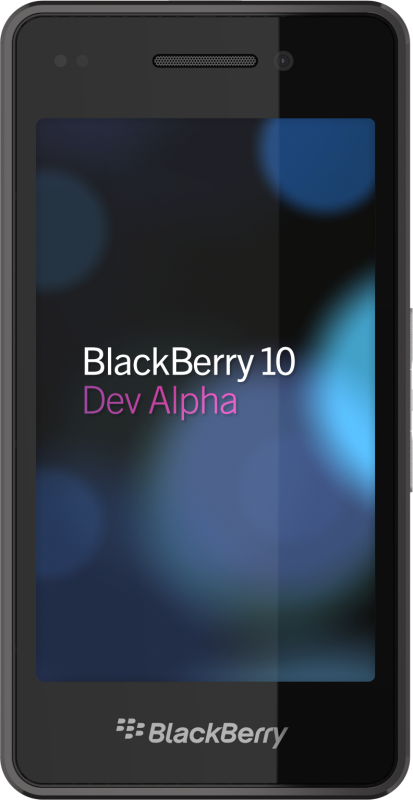
Heins and company were unwilling to discuss future hardware except to stress that the Dev Alpha devices were NOT final hardware. A few things can be inferred from the Alphas, though. If you imagine what a shrunken PlayBook would look like, you're awfully close to what you'll find if you acquire a Dev Alpha. The display is actually higher resolution than the PlayBook's at 1280x768, and at 4.2" makes it a rather dense display at that. The general design is very reminiscent of the 7" tablet with a matte black body and somewhat squared edges. The internals are most likely the same (TI OMAP 4430) though that's unconfirmed; what is known is that the device has 1 GB of RAM and 16 GB of on-board storage along with microSD, NFC and quad band HSPA+ connectivity.
FInal hardware is likely to include a similarly high resolution screen; RIM wouldn't be asking developers to optimize for that screen if they were going to simply ship a 3" 320x240 LCD. NFC can certainly be expected, and though RIM seemed to have an almost Luddite fascination with outdated SoCs in some past devices, we can expect the silicon to be equivalent or better than the PlayBook's OMAP 4430. Despite the emphasis on soft keyboards during the presentation, RIM wouldn't abandon their portrait QWERTY's, and have even committed to implementing the same text prediction engine on those devices.
Palm's gamble was a good one. Once the dominant player in mobile computing, the shift from Palm OS to WebOS was huge and, at times, terribly well executed. But where Palm faltered (performance, hardware and bugginess, notably), the deficits were too great to overcome the successes of Android and iOS. With WebOS defeated, RIM now prepares to take its gamble; and attempt to maintain their corporate customers while also growing amongst consumers. We'll hopefully not have to wait long to see how they fare.


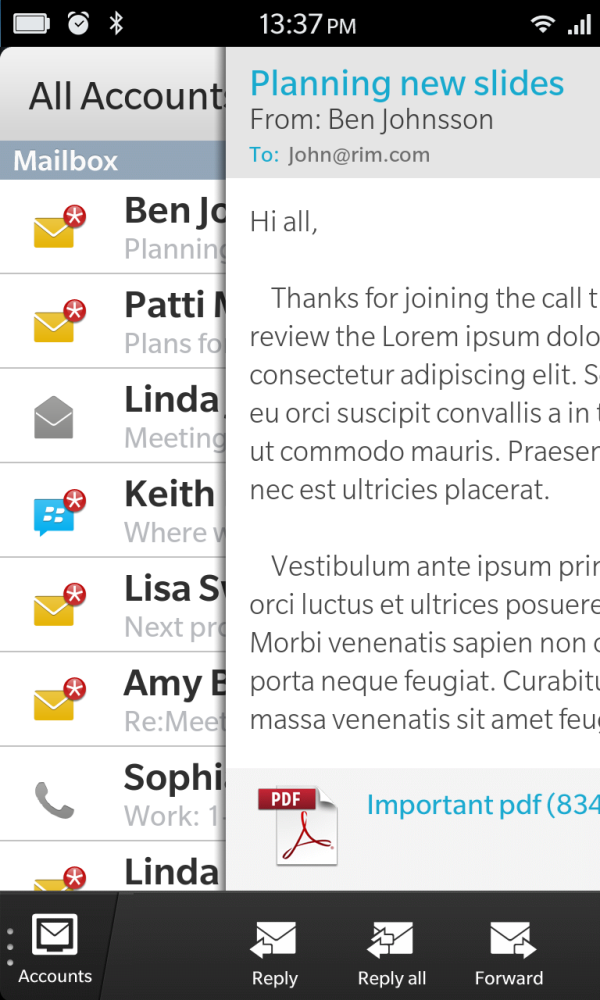
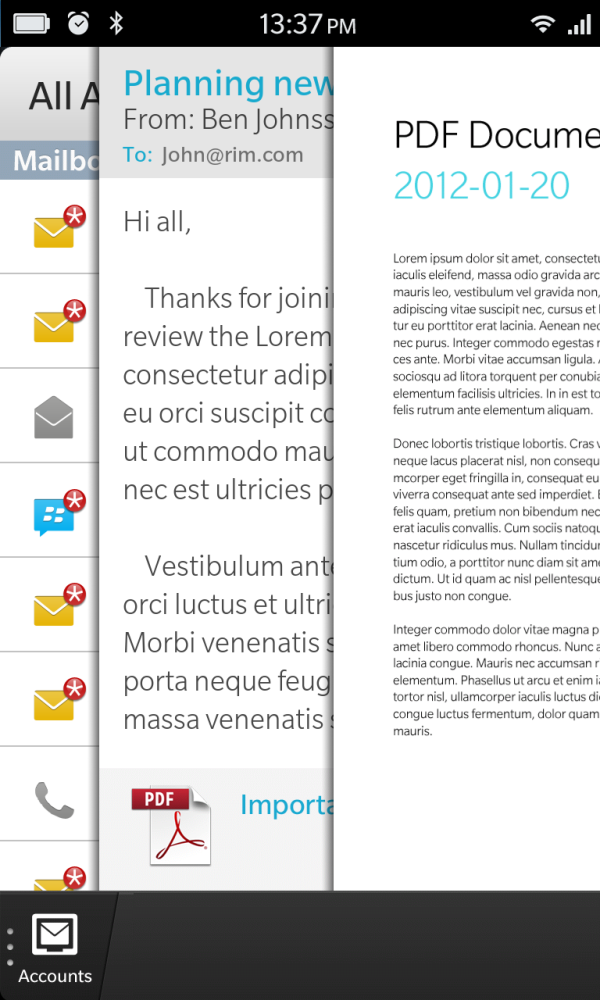
_575px.jpg)
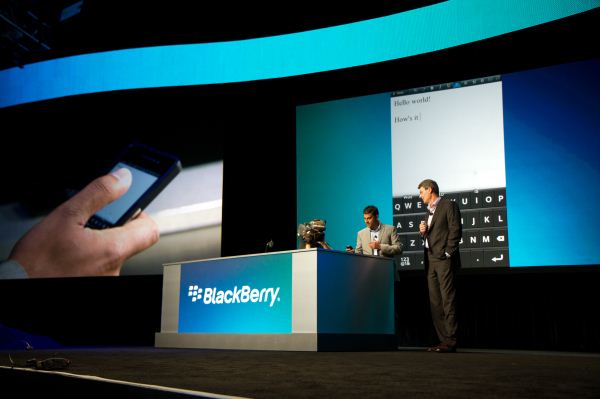
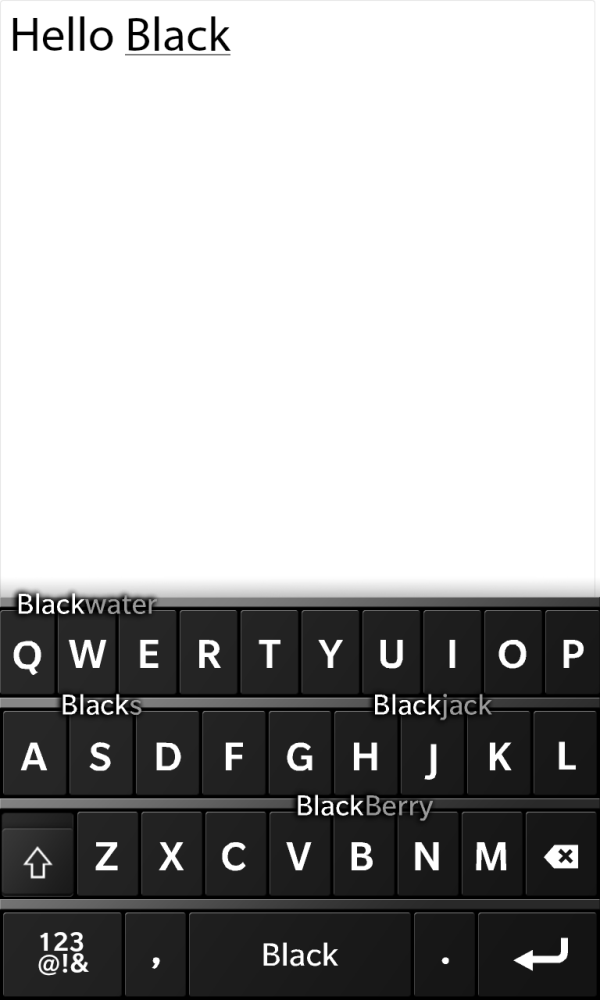








24 Comments
View All Comments
a5cent - Wednesday, May 2, 2012 - link
Today, the companies driving smartphone technology are amongst the worlds biggest software development shops. It has become a software business. The hardware shops (Palm, Nokia, RIM) have been very slow to realize this and adapt. RIM is still in denial mode. That is RIM's short term problem. RIM's long term problem is even bigger... they are now competing with the world's tech-giants. MS and Google can easily survive for years without earning a dime off their efforts, all the while investing billions of dollars in R&D. In the long term, RIM has no hope of competing with them, even if they could cut all of their losses now.RIM won't be gone tomorrow, but they do need adapt. The sooner the better. Unfortunately, it looks like the market will need to force their hand, as they seem too inflexible to do it themselves.
kae - Wednesday, May 2, 2012 - link
You need to do some deeper digging here than just commenting on the article.RIM is quite aware of their long term position. The first time in their history where they probably are. It's also, I believe, one of the reasons they are waiting on showing off their new OS fully. They know it has to be fully baked right from the release date. They don't have the 4-5 years that iOS and Android have had to get up to speed -- they have to compete from day one.
They aren't out of the dog house, but I think they fully understand where they stand, and are making huge strides to compensate for it.
DukeN - Thursday, May 3, 2012 - link
Apparently Balsille had plans/ideas for massive changes, but got shutdown by the board and that's when the departure happened. Not sure how much blame was to be passed onto Lazaridis (the Newt-looking guy).flipper74 - Wednesday, May 30, 2012 - link
Ok - I've been out of the corporate IT world for quite a few years now so I can't comment on how easy BES is ... but I do use a personal BIS solution and I love the phone. A Bold 9700 it's getting onto nearly antique now.Shopping for a phone as a consumer, I have a choice to wait for BB's next big thing, go for a Bold 9900 or something "smexy" from the 'droid side. It's a tough call to make, but if BB don't announce something soon (within the month) I can almost guarantee I'll get a 'droid. The One XL looks like a decent phone, my data usage will actually put me on a cheaper plan than I'm paying for BIS with the 9700 now and installing Swype should get me close to the email speed I reach on the Bold. All I'm asking BB is - show me some hardware that will be released SOON and give me a date.
For me, the reason to get a new phone is my 9700's battery is starting to show "the signs" and I had my first power out just yesterday after only 2 days (standard usage pattern for me is 3 days). That's what I'm saying and other consumers are probably saying something similar (those who have used a decent BB from the past 3 generations, too much budget crud in the OS4 generation and older probably hurt). I need a phone BB, I'm not sold by the 9900 as nice as it is. Granted - having said I'm down to just 2 days useful battery life is probably a slap in the face to all those iOS and 'droid users out there charging daily (on older phones).
One last plea ... give me something soon Blackberry, please!